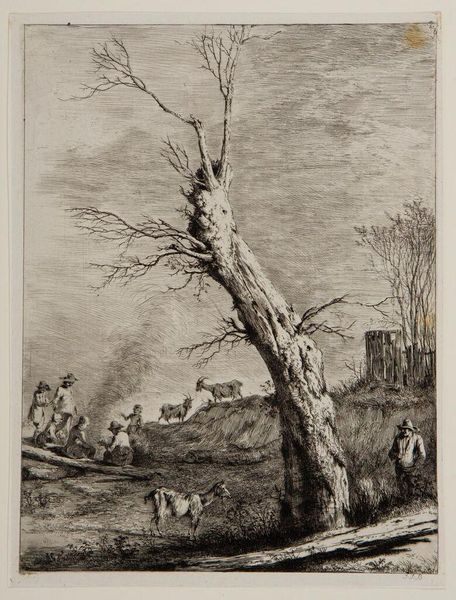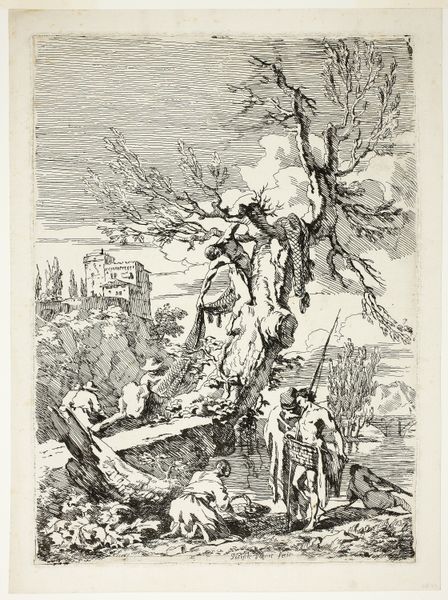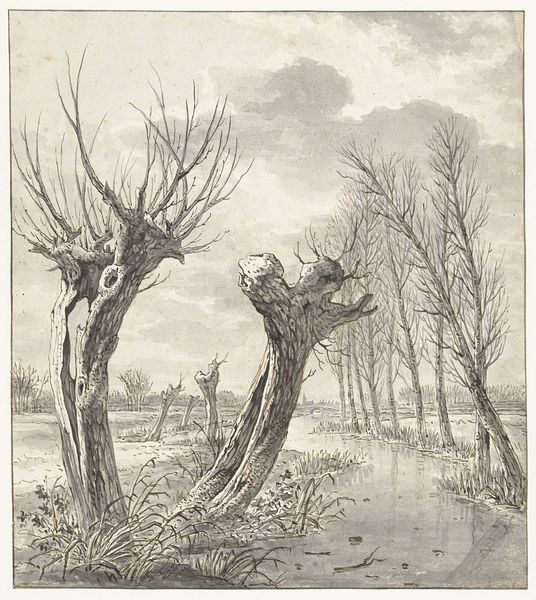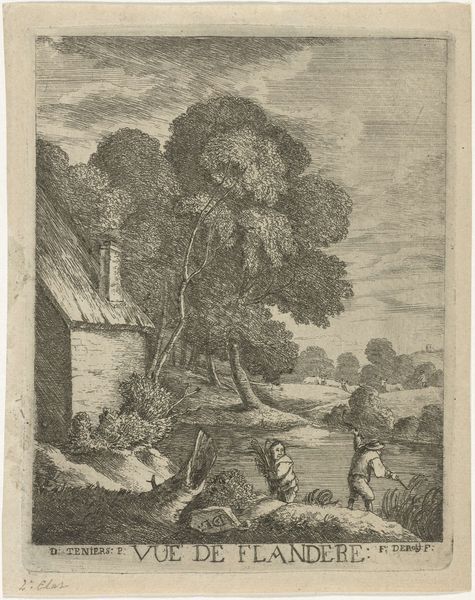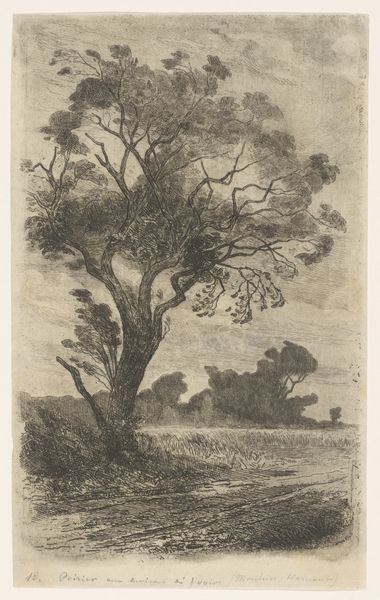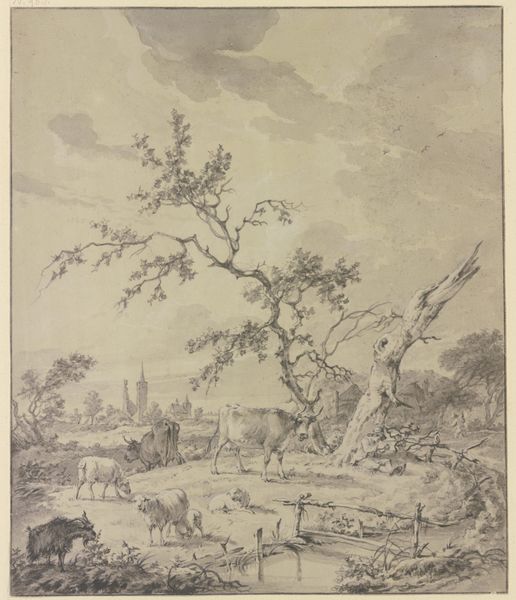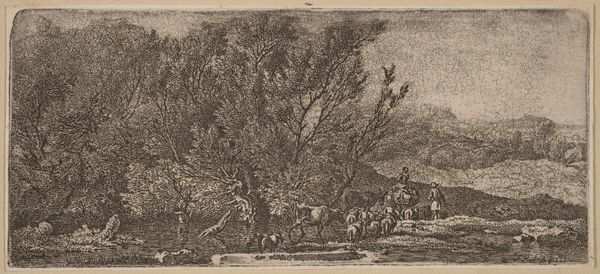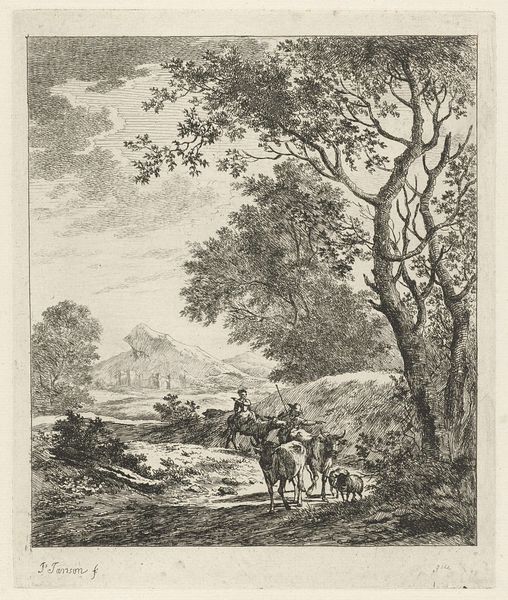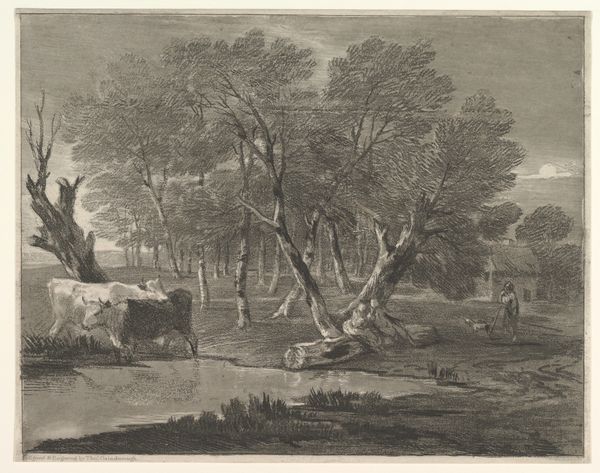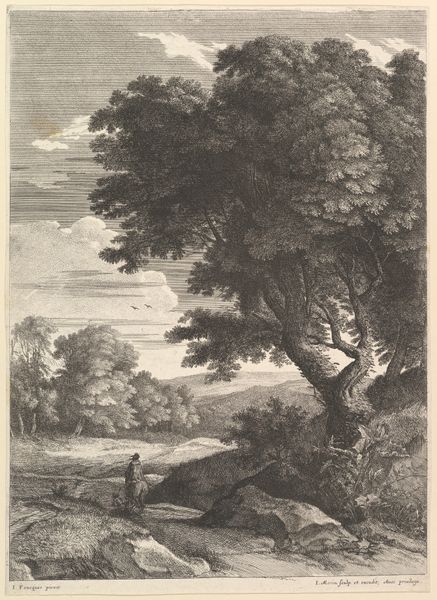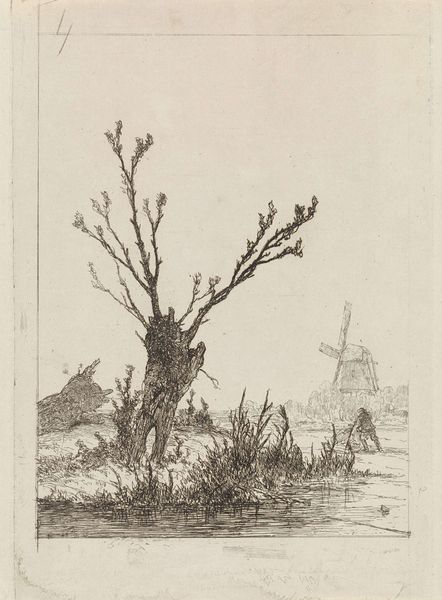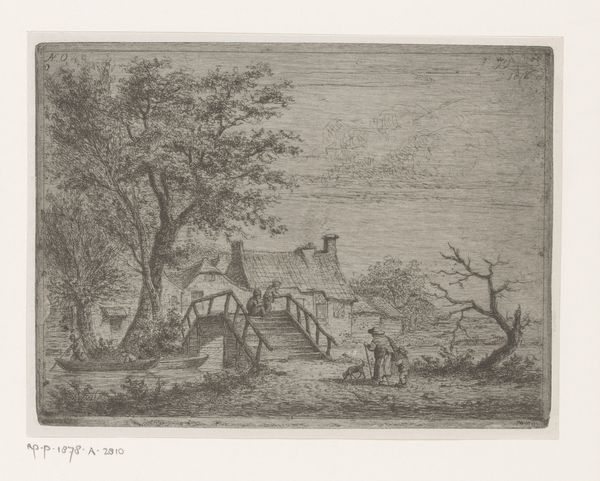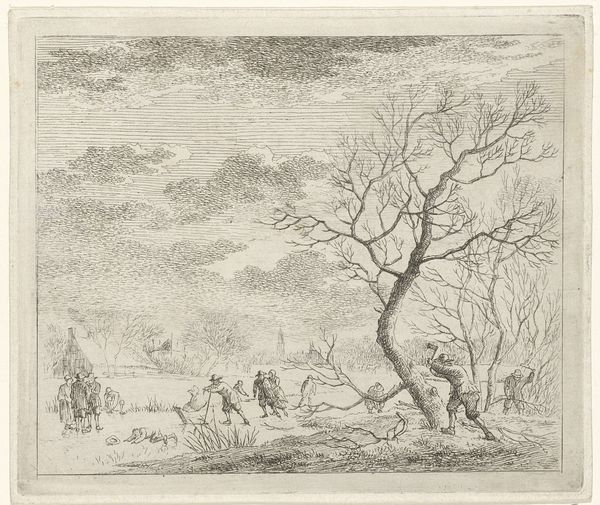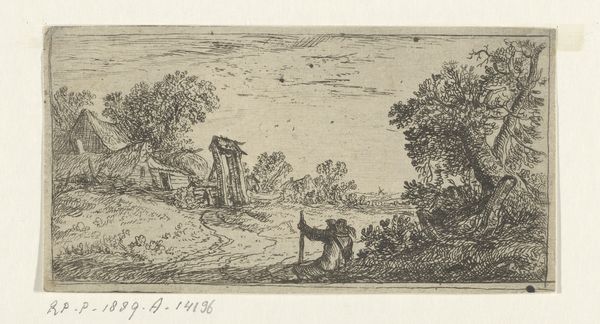
Winter, after a drawing completed in Saint-Chamond 1795
0:00
0:00
drawing, print, etching
#
drawing
#
light pencil work
# print
#
etching
#
landscape
#
winter
#
figuration
#
pencil drawing
#
romanticism
#
genre-painting
Dimensions: Sheet: 11 5/8 x 8 9/16 in. (29.6 x 21.7 cm) Plate: 10 7/16 x 7 13/16 in. (26.5 x 19.8 cm)
Copyright: Public Domain
This is “Winter, after a drawing completed in Saint-Chamond,” an etching made by Jean-Jacques de Boissieu. The magic of an etching lies in its making: an artist painstakingly draws into a wax-coated metal plate, which is then dipped in acid. The acid bites into the exposed lines, creating grooves that hold ink. When the plate is pressed onto paper, it transfers the image. De Boissieu’s Winter scene gains so much from this intaglio process. The bare tree, the figures huddled around a fire, and the distant mountains are all rendered with a stark, almost brittle quality. The dense network of etched lines creates a rich tapestry of light and shadow, evoking the chill of a winter landscape. Consider the labor involved in creating such a detailed scene, and the level of skill required to control the etching process. De Boissieu elevates a simple scene of rural life to a work of art, reminding us that the most profound beauty can be found in the everyday. By exploring the intersection between technique and image, we can fully understand the social and cultural significance of his work.
Comments
No comments
Be the first to comment and join the conversation on the ultimate creative platform.
